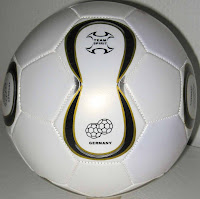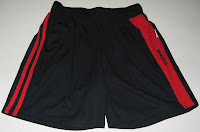Used to be the teacher-in-charge of Badminton in Deyi Secondary School (2003-2004), Bowen Secondary School (2004 - 2006) as well as Fairfield Methodist Secondary School (2006 -2007). Being a sporty person by nature, I picked up some coaching tips & ideas from my school coaches, friends who are from ex-National players of Singapore, whom have represented Singapore. My skills are medicore in comparision to my friends, however, good enough to play a decent game.
I went on to pursue my coaching certificate in badminton at level 1, which means I can coach my students, yipee!! However, I guess it comes with age & I soon got injure during a training session with my students. I tore my PCL. Not only that, I prone to injuries. Over the years, I had hurt my back, sprained every part of my body, I guess, its the kind of damage one gets if one is involved in sports. But no regrets.
Every since, I started putting my hands into some form of coaching in badminton in school, I came into contact with suppliers of badminton shuttles. That got me thinking how shuttles are made. However, all the search engines on badminton shuttles talked about laws of badminton. However, I happened to visit a site which wrote an article of how badminton shuttles are made. Now being a supplier for badminton shuttles myself, I do hope that with this article, it helps people understand more about badminton. Hopefully, it will help promote badminton participation & understanding to the next level.
I'll like to promote Kaierte Badminton Shuttlecocks for people who are in charge of badminton or for those who play badminton. For enquiries, pls call 81020469 or visit us @
Neo Concepts Pte Ltd
44 Jalan Keria, Singapore 588557
Tel : 64696076
Fax : 64638525
Email :
concepts.neo@gmail.com

 Model 103 : Grade 1(U.P : S$24.00)Now : S$20.00 per tubePromotion:For purchases of more than 25 tubes, free 3 Yonex grip tapes & 1 tube of model 03
Model 103 : Grade 1(U.P : S$24.00)Now : S$20.00 per tubePromotion:For purchases of more than 25 tubes, free 3 Yonex grip tapes & 1 tube of model 03

Model 03 : Grade 2
(U.P : S$20.00)
Now : S$18.00 per tube
Promotion:
For purchases of more than 25 tubes, free 3 Yonex grip tapes & 1 tube of model 06 
Model 06 : Grade 2
(U.P : S$18.00)
Now : S$15.00 per tube
Promotion:
For purchases of more than 25 tubes, free 3 Yonex grip tapes & 1 tube of model Feiyue 03

Model Feiyue 2 : Grade 2
(U.P : S$17.00)
Now : S$14.00 per tube
Promotion:
For purchases of more than 25 tubes, free 3 Yonex grip tapes & 1 tube of model 06

Model Feiyue 3 : Grade 3 (U.P : S$15.00)
Now : S$11.00 per tube
Promotion:
For purchases of more than 25 tubes, free 3 Yonex grip tapes & 1 tube of model Feiyue 2
While stocks last!!
How much do you know about Badminton
Shuttlecocks
Feather
Many people think it is easy to make shuttlecocks. After all, it consists of a cork head of 16 feathers, a couple of threads and some glue. Sounds pretty simple doesn’t it? Well, this is a misconception. Although there are many shuttlecock factories in the World, there are many that had closed down each year. The reason is because making high quality shuttles is a skill and keeping the consistency through the entire production is a difficult process. After reading this article, you will understand that commitment to make superior quality shuttles for badminton players around the world.
Cork HeadThe weight of the cork head is between 2.2 grams to 2.6 grams with the base measurement from 27 mm to 28 mm in diameter and rounded at the bottom. All the
cork grades are Grade 1, which is imported from Taiwan for their better quality.
Glue and Thread
There are two kinds of glue used in making the shuttles. One is Thread glue Bs-328L and the other is Base blue Bs-327S. Both glues are imported from Germany and combined with glue from Taiwan. The glue is chosen for its good quality because it doesn’t turn brown on the shuttles. Our thread is imported from Japan. This thread has shown and proven to blend well together with the feather. As a result, the feather and the thread will never separate. Although the cost of the glue and thread cost are higher than domestic brands, we do not want to compromise on the quality of the shuttles made.
Feather SelectionFeathers selection is a strict and meticulous process. Each feather must weight between 1.7 grams to 2.1 grams or else they will be discarded. After this, the feathers are measured for its angle using a special tool. This step is vital to the overall shuttlecock because if a single feather is off just slightly, the shuttle would wobble during flight. Special attention is made at this stage. All the feathers are divided into 7 façade angles and 7 flank angles. The goose feather Grade 1 has 14 kinds of angles. It’s the same as the Grade 2.
Feather ThrustingIn this process, the feathers are thrusted into the cork head with machines imported from Taiwan. They used the compressed air and photo-electromotive force to get accurate feather positioning. The 16 feathers in each shuttle are exactly the same length (63.5 mm to 64 mm) when measured from tip to the top of the base. In some factories, the workers thrust the feathers with their hands, resulting in inaccuracy and hence the shuttles are inconsistent during flight, compromising the game. Therefore, when you purchase shuttles, those that are thrust by hands are generally cheaper than those made by machines.
Bottom GlueIn the Glue brushing process, the feathers and the cork are filled with bottom glue after all the feathers are thrust into the cork head properly. The bottom glue is different from the thread glue. It takes about a week to dry after which they will undergo the thread crocheting process.
Thread Crocheting
In the Thread Crocheting process, the thread would be crochet onto the feathers with a small hand-moving machine. In some factories, two threads are crochet onto the feathers with a hand-swaying machine at the same time. The shortcoming is the two ties of the threads are at the same feather and there are some holes between the thread and the feather. Although production is faster, the stability of the shuttle is deficient and durability is reduced. Especially when the glue is sprayed by a machine. That is why it is prefer to make the ties at the opposite ends to ensure stability and durability. The tip of the feathers for a circle has a diameter from 66.5mm – 67mm. The shuttles are then sent back to the Glue Brushing workshop again for further inspection before it goes on to the next stage.
Thread Glue
In the Glue Brushing process, the glue is brushed onto the threads twice. The shuttles are then put into the tubes after the glue on the surface is dry. Half a month later, they are then sent to the Inspecting workshop. The weight of the glue is limited to exactly 0.6g. Any more or less glue would drastically affect the flight or the durability of the shuttle.
Shuttle Inspection
In spite of the many stringent inspections throughout the shuttle making process, there are always between 3 to 5 unacceptable shuttles for every 1000 shuttles made. These rejected shuttles are sent back to quality control centre for further inspection to determine where the fault originated. These rejected shuttles after a 2nd round of inspection are then sent to the Testing Hall for speed designation.
Shuttle Testing
The shuttles are tested using a shuttle speed testing machine. Grade 1 & 2 shuttles are tested for speed & stability because they are tournament grades. Grade 3 & 4 shuttles are tested only once because they are for recreational purposes. Shuttle stability is divided into 4 categories, namely Flight A, B, C & D. Grade 1 & 2 shuttles have a Flight A classification while Grade 3 has a flight A & B classification while Grade 4 has a flight A, B & C rating. During this stage, rotational speed is tested at the same time. The average rotational speed is 320 R/M. The shuttles are then packed in a foiled-lining tubes before sold. Kaierte shuttles has been tested periodically by professional province players. The most durable shuttlecock was smashed over 100 times at 100 miles per hour by Guangzhou elite players before it cannot be used. This demonstrate not only the durability but also the quality of Kaierte shuttles.
Shuttle Speed
Standard speed of 75 to 80 is used. There is a 30cm distance between each speed. The reason for different shuttle speed is because different countries have different climate. For example, shuttles with speed 76 are used during summer while shuttle speed of 77 is used during winter months in China. So countries that have four seasons have to use different shuttles speed.

.jpg)










































.jpg)





